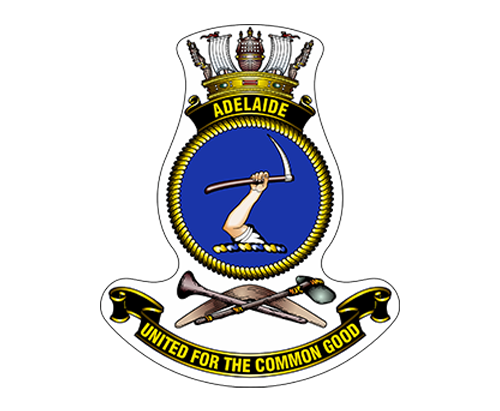HMAS Adelaide (III) was commissioned at a ceremony at Fleet Base East, Sydney on 4 December 2015.
Built by BAE Systems Australia and Navantia, the landing helicopter dock (LHD) ships are the largest ever constructed for the Royal Australian Navy (RAN). The ships provide the Australian Defence Force (ADF) with one of the most capable and sophisticated air-land-sea amphibious deployment systems in the world.
The ship's roles are to:
- embark, transport and deploy an embarked force (Army in the case of the ADF but could equally be an allied Army or Marines), along with their equipment and aviation units
- carry out and support humanitarian missions.
The ships have a conventional steel monohull design with the superstructure located on the starboard side of the flight deck. The ships have the shallowest possible draft to allow operation in secondary ports and harbours, and in the shallow waters common in coastal regions.
There are 4 main decks:
- heavy vehicle
- accommodation
- hangar and light vehicles
- flight deck.
The flight deck has been configured with 6 spots on the port side for medium sized aircraft such as the MRH-90 or Blackhawk. This allows for simultaneous take-off and landing operations. Alternatively it can support simultaneous take-off and landing operations of four CH-47 Chinooks.
There are 2 aircraft elevators that can accommodate medium sized helicopters, with one able to accommodate larger helicopters such as CH 47. Both aircraft elevators service the hangar and light vehicle/cargo deck and the forward elevator is dual roled for stores and personnel.
Between the flight deck and the accommodation deck is a contiguous hangar and light vehicle deck. The hanger (990 m2) occupies the after section of the deck while the light vehicle deck (1,880 m2) is located on the forward section of the deck. The hanger can accommodate up to 8 medium sized helicopters with 18 medium sized helicopters able to be accommodated if the light vehicle deck is also used.
The command and control (C2) and combat systems consist of:
- a combat management system
- extensive ICT infrastructure
- 3D air search radar, helicopter control and surface radar, and navigation radar
- identification, friend or foe (IFF) capability
- an electronic support measures (ESM) and electronic countermeasures (ECM) suite
- an integrated communications system
- electro-optical and IR surveillance systems.
The LHD will be fitted with a number of defensive systems including:
- an Anti-Torpedo Towed Defense System (Nixie)
- four 20 mm automated guns
- six 12.7 mm machine guns
- an active missile decoy system – Nulka (weight and space reserve).
Specifications
- Class: Canberra Class
- Type: amphibious assault ship (LHD)
- Pennant: L01
- International callsign: VKLA
- Motto: United for the Common Good
- Home port: Fleet Base East
- Builder: BAE Systems Australia and Navantia
- Laid down: 18 February 2011
- Launched: 4 July 2012
- Commissioned: 4 December 2015
- Displacement: 27,800 tonnes (unloaded and not docked down)
- Length: 230 metres
- Beam:
- 32 metres
- 29.5 metres (at waterline)
- Draught:
- 7 metres (transit)
- 10 metres (docked down)
- Flight deck:
- 202.3 metres (length)
- 32 metres (width)
- 4,750 square metres (area)
- 27.5 metres (height)
- Speed:
- 20+ knots (maximum)
- 19 knots (sustained maximum at full-load)
- 15 knots (economic cruising)
- up to 8 knots (reversing speed with full directional control)
- Range:
- 6,000 nautical miles (at 20 knots)
- 9,000 nautical miles (at 15 knots)
- Physical countermeasures:
- SLQ-25C towed torpedo decoy
- 4 BAE Nulka decoy launchers

Function
Amphibious assault ship/boat